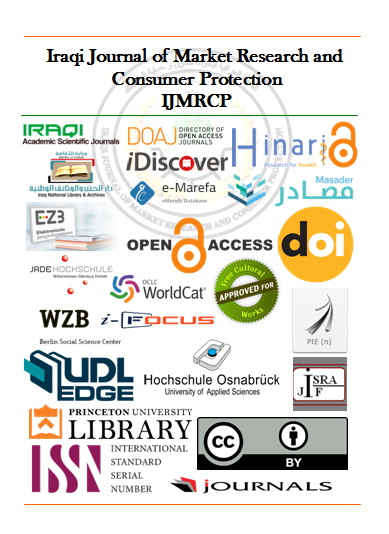ESTIMATION OF WATER POLLUTION AND CULTIVATED PLANTS ON THE DIYALA RIVER WITH HEAVY ELEMENTS DURING THE SUMMER BY FLAME ATOMIC ABSORPTION
ESTIMATION OF WATER POLLUTION AND CULTIVATED PLANTS ON THE DIYALA RIVER WITH HEAVY ELEMENTS DURING THE SUMMER BY FLAME ATOMIC ABSORPTION
Keywords:
Heavy metals, environmental pollution, leaf vegetables, Diyala river.Abstract
This study was carried out to measure the percentage of heavy metals pollution in the water of the Diyala river and to measure the percentage of contamination of these elements in the leafy vegetables grown on both sides of the Diyala river, which are irrigated by the contaminated river water (celery, radish, lepidium, green onions, beta vulgaris subsp, and malva). Laboratory analysis was achieved to measure the ratio of heavy element contamination (Pb, Fe, Ni, Cd, Zn and Cr) using flame atomic absorption spectrophotometer during the summer months of July and August for the year 2017. The study showed that the elements of zinc, chromium, nickel and cadmium were high concentrations and exceeded. The maximum concentration of these elements near the Rastmiya station was 0.38 mg/ L for nickel, 0.25 mg/ L for cadmium, 3.06 mg/ L for zinc, 0.21 mg/ L for chromium, either iron and lead elements were within the WHO limit while in plants, lead, cadmium and chromium concentrations were high and exceeded the WHO limit. The lead concentration was high in all plant species and had the highest concentration at 5.33 mg/ kg in roots of lepidium. The cadmium component was high in roots The leaves of all plants reached its highest concentration at the root of the 5.14 mg/ kg in roots of lepidium, either the chromium component was Is high in the root of all plant species and has the highest concentration in roots of radish 4.83 mg/ kg, while no concentration has been shown in leaves. Iron, nickel and zinc have low concentrations in plants and are within the WHO limit for heavy elements in plants.





